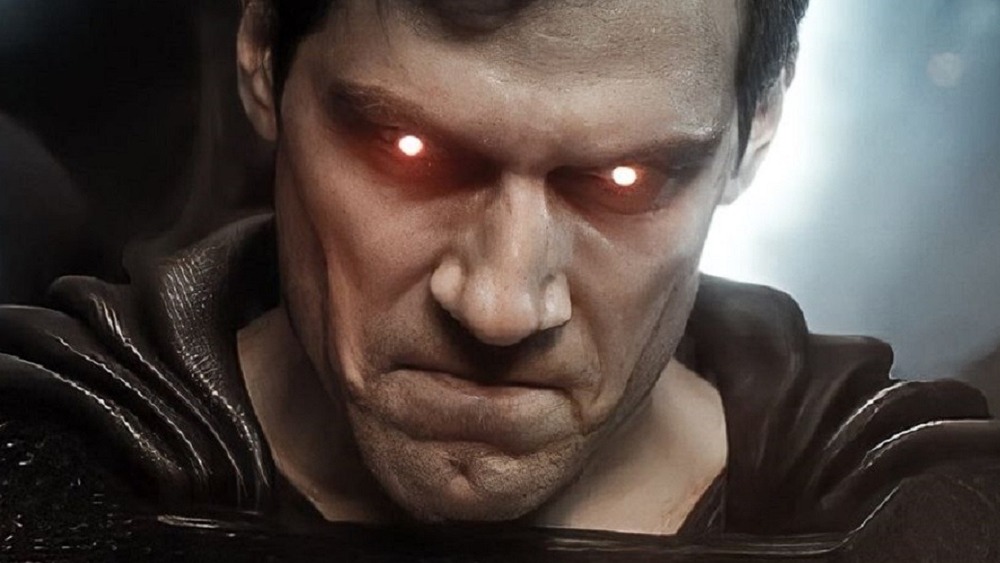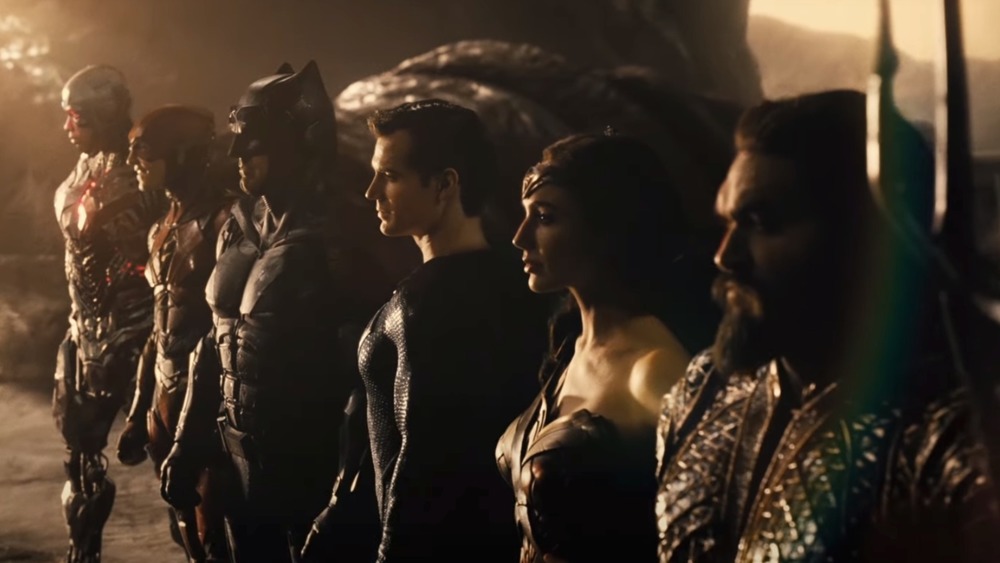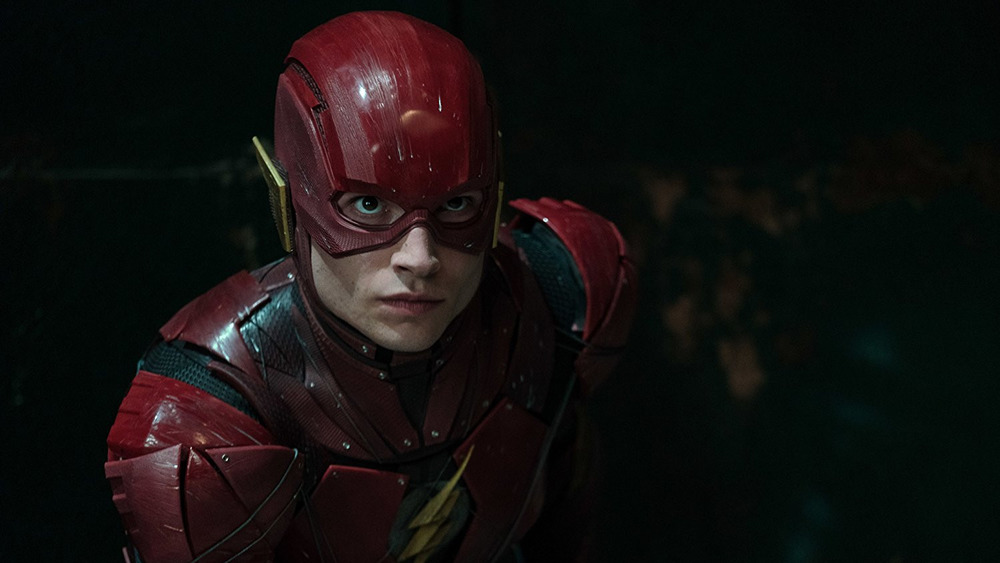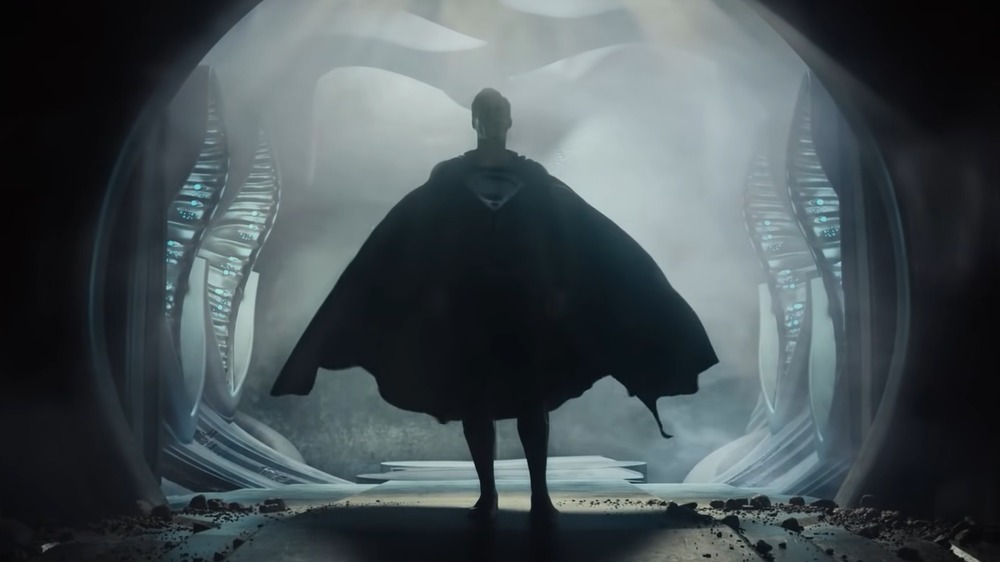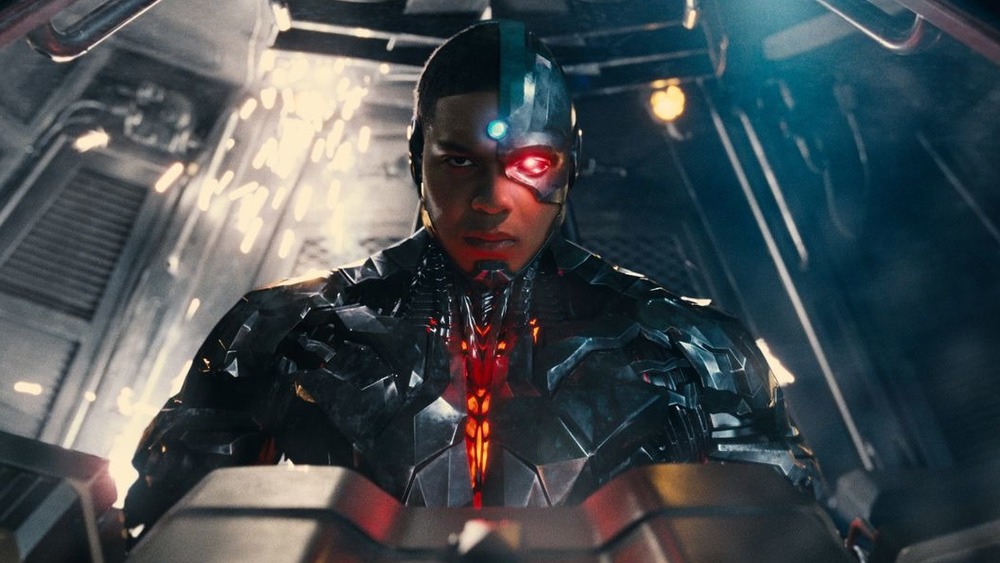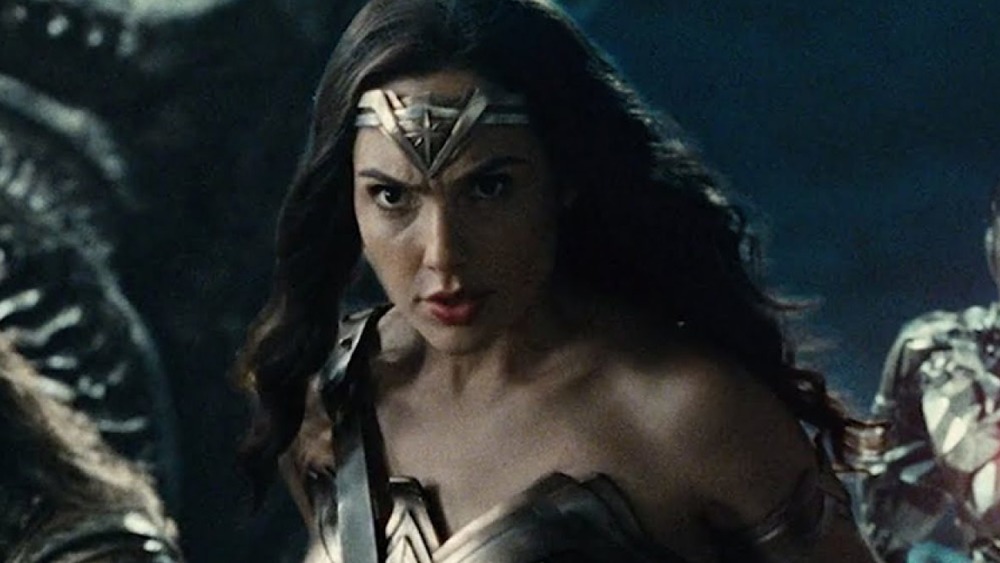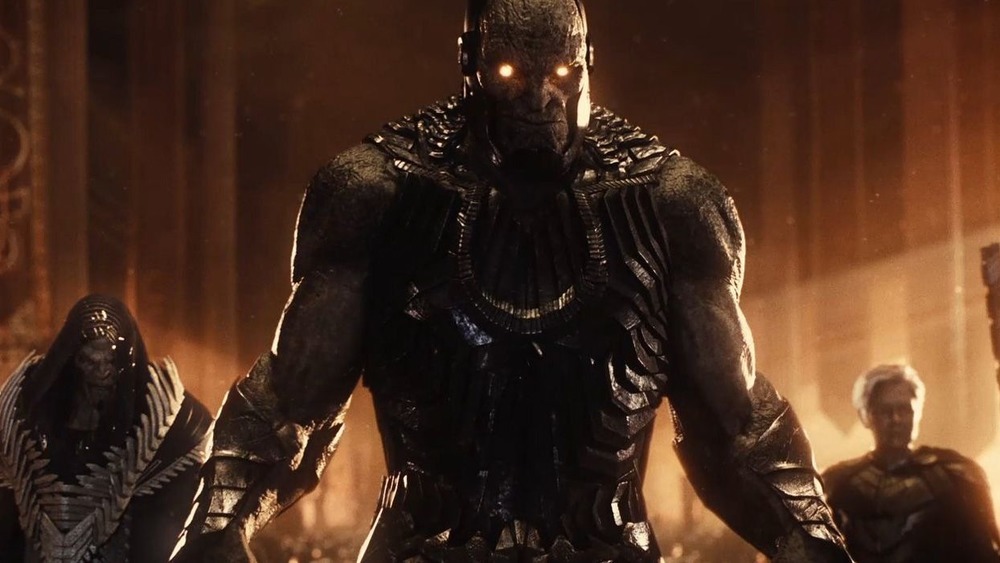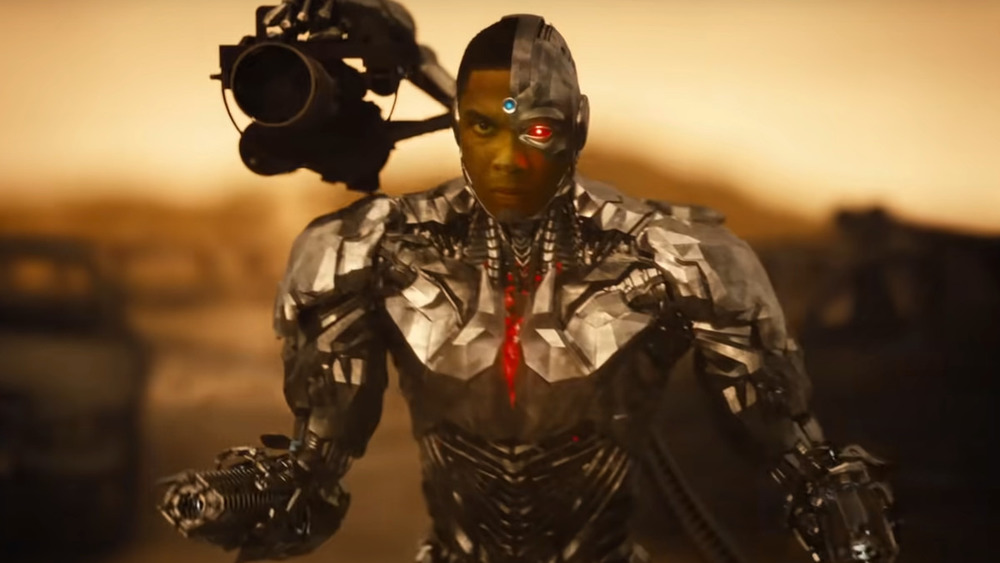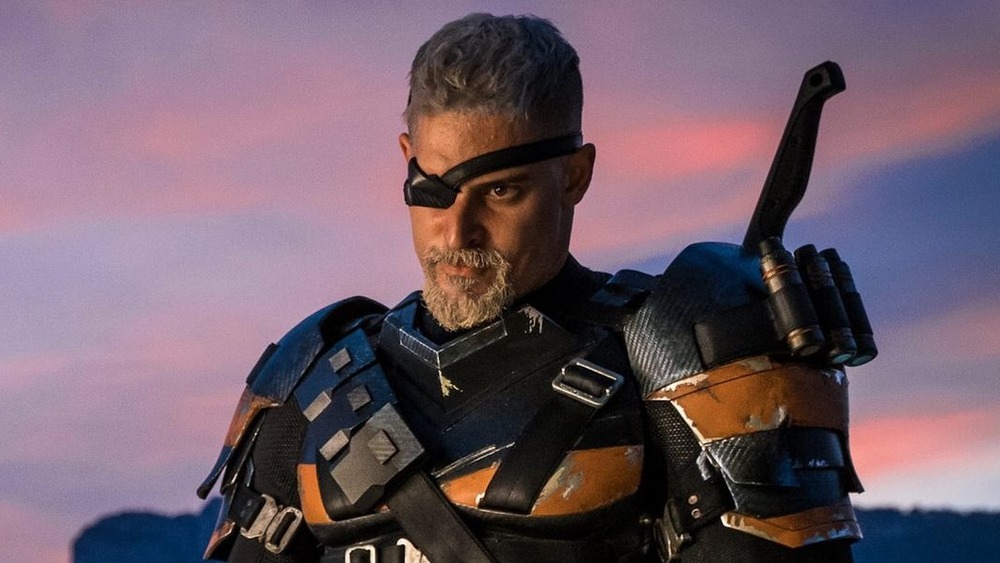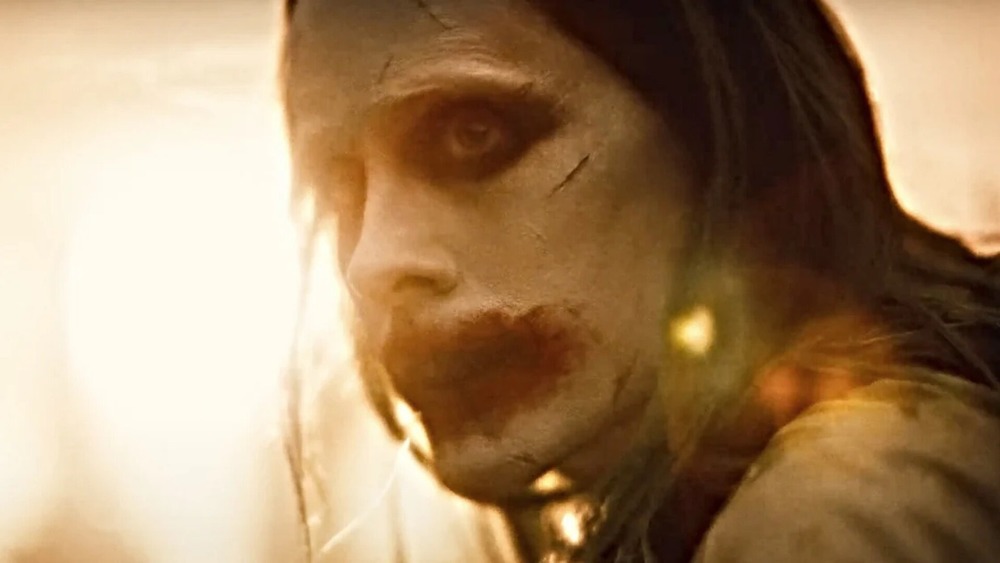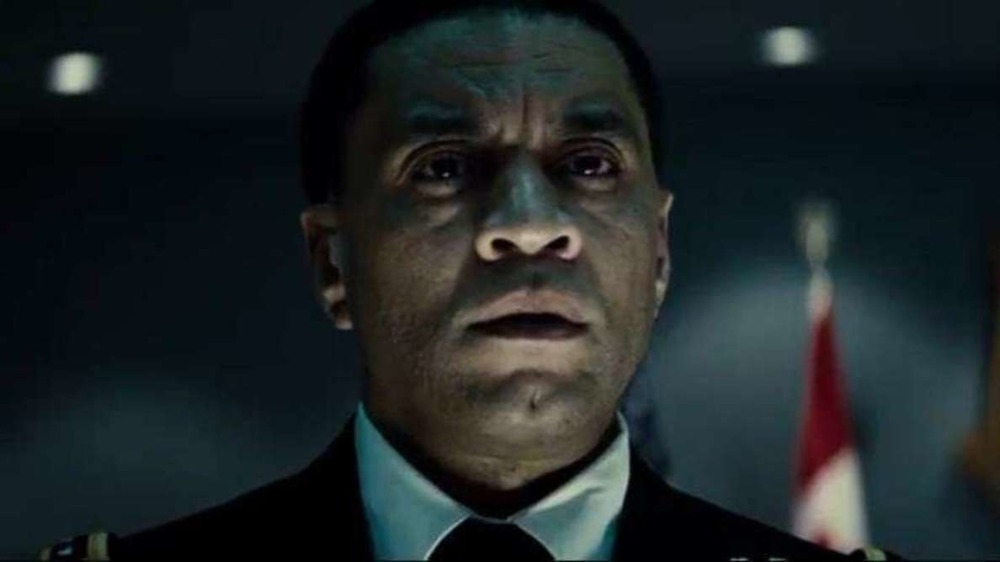The End Of Zack Snyder's Justice League Explained
If you click a link and buy a product or service from a merchant, we may be paid an affiliate commission.
The first live-action Justice League was always going to feature lots of plot development to properly establish a team-up between DC Comics legends. But thanks to it running over 240 minutes, Zack Snyder's Justice League contains an especially large amount of build-up revolving around the individual worlds of its principal superheroes. Here, the rushed pace of the theatrical cut has been replaced with in-depth dives into the lives of figures like Cyborg, the Flash, and Steppenwolf.
Of course, this superhero action movie isn't all set-up. Eventually, Batman and other DC Comics mainstays join forces to fight against Steppenwolf and his cronies. This results in an extended ending that throws a barrage of major developments at the viewer. Some of these are related to key culminations in the character arcs of people like Superman and the Flash, while other closing revelations entail setting up potential future entries in the DC Extended Universe landscape. With all these new details, it's time to unpack the ending of Zack Snyder's Justice League and explore the significance behind its most memorable moments.
Here comes Steppenwolf
Zack Snyder's Justice League is not short on story. The film establishes the individual worlds of newbie superheroes Cyborg (Ray Fisher), Aquaman (Jason Momoa), and the Flash (Ezra Miller) while also depicting a world still reeling from the demise of Superman at the end of Batman v Superman: Dawn of Justice. In these earlier scenes, Snyder and company establish the personality traits of our superhero protagonists that will end up being crucial in the film's climax. For example, we're introduced to a forlorn Cyborg, still unsure of what to do with his new robotic enhancements. Barry Allen, meanwhile, is stuck doing dead-end jobs to help pursue a criminal law degree so he can get his dad, Henry Allen (Billy Crudup), out of prison.
The individual members of the titular Justice League have very different personal problems to work out. However, a recurring trait across Cyborg and Aquaman's storylines is a lack of interest in working as a team player. Despite those doubts, all of these heroes are forced to work together once Steppenwolf (Ciaran Hinds) begins assembling the Mother Boxes to destroy Earth. It's a threat so intimidating that the team decides to use one of the Mother Boxes to resurrect Superman, a figure powerful enough to help defeat this otherworldly entity. By the time the finale begins, the Justice League has headed off to Russia to confront their cosmic enemy, and Superman has come back to life and is regaining his personality through sharing tender moments with Lois Lane.
The ending of Zack Snyder's Justice League features a run to remember
Every member of the Justice League has a critical role to play in the final confrontation against Steppenwolf, and Barry Allen is no exception. In order for Cyborg to access the trio of Mother Boxes, he'll require a shock of electricity that can only be generated by the Flash running at an incredibly high level of speed. While engaging in that kind of run, the Flash is shot down by a Parademon soldier. With our hero briefly knocked aside, Darkseid and his forces are given enough time to activate the Mother Boxes and destroy Earth. But just as the planet is being annihilated, the Flash decides to break his one rule and run so fast that he ends up going back in time.
It's a risky move that the superhero isn't sure he'll be able to survive, but he has no choice if he wants to save the world. While running at such an extreme velocity, the Flash remembers his father's remark that his son was "the best of the best," and Barry realizes that he's finally lived up to that moniker. In the end, his daunting run pays off enormously, as time is turned back just enough so Flash can give Cyborg that electrical boost, thus cementing the world's safety. However, it also gives Barry Allen the revelation that he is indeed capable of traveling through time, an ability that's gotten the character into plenty of trouble in comic book storylines like Flashpoint.
Superman returns
Much like in the theatrical cut of Justice League, Zack Snyder's version sees Superman (Henry Cavill) returning from the dead, briefly turning evil, and then restoring his original personality just in time to stop Steppenwolf from destroying Earth. In Snyder's version, though, the transition takes longer to happen.
The biggest deviation between the films is an extended scene in Zack Snyder's Justice League depicting Superman returning to his Fortress of Solitude before he reunites with the Justice League. The resurrected Kryptonian walks around the halls of his lair while the voices of his two fathers, Jor-El (Russell Crowe) and Johnathan Kent (Kevin Costner), speak to him about the importance of pursuing who he wants to be. By the end of this sequence, Superman has adorned a black version of his traditional superhero suit and flies away, ready to join the Justice League.
When he does, he manages to get there just in the nick of time. Steppenwolf's axe is about to land on Cyborg when Superman intervenes. Using his superpowered breath to turn the axe into ice, Superman makes his powerful presence apparent, and he and Steppenwolf proceed to have a duel. This confrontation ends with Superman pinning the beast to the ground and punching him repeatedly. Superman returned to this world unsure of where he stood or who he was. As he fights Steppenwolf for the good of humanity, it becomes apparent that the Man of Steel has become the protector he was always meant to be.
Cyborg's vision
In the final battle against Steppenwolf's forces, Cyborg takes it upon himself to disconnect the three Mother Boxes, thus preventing Earth's destruction. His ability to tap into any piece of technology means he has the best chance of dismantling these objects and foiling Steppenwolf's plan. Wonder Woman (Gal Gadot) makes it apparent, though, that there's a risk to this. While Cyborg is tapping into them, the Mother Boxes will exploit his fears in an attempt to stop him.
And that's just what happens once Cyborg gets inside the Mother Boxes and sees a vision of his parents, Silas Stone (Joe Morton) and Elinore Stone (Karen Bryson). They stand there with a fully healed version of Cyborg and urge their son to stop fighting. "My broken boy," Elinore wistfully says while his father explains that Cyborg can be fixed. "You don't have to be alone anymore," Silas tells his son.
It's a scenario designed to tap into Cyborg's insecurities and stop him from disconnecting those Mother Boxes. But our hero isn't backing down now. "I'm not broken," Cyborg tells these visions. "And I'm not alone!" Cyborg proceeds to continue in his mission with the help of his Justice League comrades. The young man who once sat in his apartment alone and unsure of where he fit in this world has now come to accept his new form, his new friends and his new purpose on the planet. It's also a sequence that fulfills earlier rumors that Cyborg would be getting a much greater spotlight in Zack Snyder's Justice League.
Wonder Woman gets her revenge in Zack Snyder's Justice League
All of the members of the Justice League have a bone to pick with Steppenwolf, given that he's keen on eradicating the planet they call home. However, Wonder Woman develops her own personal animosity with this Apokolips resident after an intense mid-movie interaction. Here, Steppenwolf reveals that he slaughtered many of Wonder Woman's Amazonian allies in his pursuit of the Mother Box that was once held on the island. Enraged at the thought of Themyscira's finest warriors dying at his hands, Wonder Woman's quest for revenge against Steppenwolf is initiated.
Once the final battle arrives, Wonder Woman leads Aquaman and Cyborg to a personal confrontation with Steppenwolf. Here, the alien once again taunts Wonder Woman with how many Amazonian's he's killed, all the while reminding her that she could've saved them if she hadn't abandoned her home for the world of man. Enraged, Wonder Woman begins to brutally fight back against the villains and even bangs her bracelets on her shield to create an explosion that sends Steppenwolf spinning. Eventually, after the other members of the Justice League join in to fight this monster, Wonder Woman gets her revenge. The final move that kills this minion of Darkseid is Wonder Woman slicing off his head with her sword. With the flick of a blade, Wonder Woman has honored the memories of her fallen Amazonian comrades.
Darkseid is ready for war
Zack Snyder's Justice League ends on many teases of things to come, with one of those involving Darkseid (Ray Porter). Seen throughout the movie as the intimidating superior and nephew of Steppenwolf, Darkseid has been firmly established as someone you don't want to cross. This reputation is reaffirmed in the film's climactic scene, which involves Darkseid witnessing Steppenwolf's defeat at the hands of the Justice League. Shortly afterwards, his second-in-command, DeSaad (Peter Guinness), notes that he always knew Steppenwolf would fail. But despite this setback, Darkseid has already got his eyes set on the future. Now knowing that the Anti-Life Equation is built into the planet, Darkseid intends to pursue Earth again, this time with more extreme force. "Ready the armada," Darkseid informs DeSaad. "We will use the old ways."
This line is referring to an earlier flashback that showed Darkseid leading a massive army to destroy Earth, just as he had done with thousands of planets before. At the time, he was stopped by the combined forces of Amazonians, Atlanteans, mortal men, gods, and a Green Lantern warrior. Now, he intends to lead such an army again to Earth to face off against the newly united Justice League. As Darkseid lurches out of frame in his final scene in Zack Snyder's Justice League, it becomes apparent that this moment functions to further solidify the ruler of Apokolips as a formidable threat in potential Justice League follow-up.
All's well that ends well
Zack Snyder's Justice League concludes with an epilogue entitled "A Father Twice Over." The title refers to a line said by Silas Stone to his son in a pre-recorded message, where he mentions that, through being his biological father and giving him his robotic enhancements, he's Cyborg's father in more ways than one.
Stone's monologue to his son about the importance of pursuing your own path in this world plays over a montage showing where all the members of the Justice League are in the wake of defeating Steppenwolf. Aquaman meets up with Mera (Amber Heard) and Vulko (Willem Dafoe), who are both grateful for this half-Atlantean's part in saving the world. Meanwhile, Bruce Wayne (Ben Affleck) uses his enormous wealth to buy up the bank that foreclosed on Clark Kent's childhood farmhouse home. Barry Allen has also managed to score a job at a crime lab in his home of Central City, much to his incarcerated father's delight.
Most importantly, though, is that Wayne buys up a building to serve as a headquarters for the Justice League and their activities, complete with a large round table that "has chairs for six ... but room for more." Both the building and the table echo the team's classic Hall of Justice location, and the reference to the group expanding its roster in the future is an acknowledgement of how so many DC Superheroes have come and gone from the Justice League in the comics.
A Lex Luthor/Deathstroke rendevouz
Zack Snyder's Justice League concludes with a trio of standalone sequences that help to set up future adventures for its principal character. The first of these scenes is one that will be familiar to anyone who saw the mid-credits sequence in the theatrical cut of Justice League. The rendezvous between Lex Luthor (Jesse Eisenberg) and Deathstroke (Joe Manganiello) is retained here and begins like it does in the original version, with an Arkham Asylum guard discovering that Luthor has broken out of his cell. We then cut to Deathstroke emerging onto the billionaire's yacht, which is where Zack Snyder's Justice League differs from the theatrical version.
Originally, this sequence revolved around Luther hinting at the formation of the Legion of Doom. Here, Luthor calls upon Deathstroke — who harnesses a grudge against Batman — to divulge the news that Gotham's Dark Knight is actually Bruce Wayne. It's info that gets the grizzled Deathstroke to grin and announce that there's reason to pop some champagne. Apparently, this whole scene was meant to serve as a set-up for Ben Affleck's proposed solo Batman movie, which would've seen Deathstroke serve as its principal antagonist. But in the years since this post-credit scene was filmed, things have changed drastically for Batman's big-screen plans. We know Ben Affleck's character is returning for The Flash, but past that, we're unsure of what's in store for the Caped Crusader, especially with Robert Pattinson running around. However, this initial tease has been restored in Zack Snyder's Justice League to offer fans a taste of what could've been and, hopefully, what can be again.
Another Knightmare scenario
The second of Zack Snyder's Justice League's closing scenes returns to a familiar locale from Batman v Superman: Dawn of Justice – Batman's Knightmare landscape. This particular voyage to the post-apocalyptic location sees Batman joined by a gaggle of companions, including Justice League members Flash and Cyborg, Mera, Deathstroke, and Jared Leto's Joker. The scene begins with Mera discussing her desire to murder those responsible for killing Aquaman before asking Batman how he could possibly know what it's like to lose a loved one. This leads to a tete-a-tete between Joker and Batman, with the former goading the Dark Knight over the loss of his parents. To retort, Batman recalls how he held a dying Harley Quinn in his arms while she said to kill the Joker.
These conflict-ridden allies are suddenly greeted by a figure from Batman's previous Knightmare experience — an evil, twisted version of Superman. Now working for Darkseid, this Superman fires laser beam blasts from his eyes at the team before Bruce Wayne suddenly awakens in the present day from his vision. Not only does this closing sequence follow up on threads and characters from prior DCEU movies, but it's also a glimpse at what Zack Snyder once envisioned for the franchises future. Per Snyder (via MovieWeb), Justice League 2 would've been largely set within this Knightmare landscape. While that follow-up remains an unlikely proposition, this closing scene in Zack Snyder's Justice League offers a glimpse of what could've been.
Martian Manhunter reveals himself at the end of Zack Snyder's Justice League
With Zack Snyder's Justice League, die-hard fans of the DCEU finally got to see Harry Lennix's Man of Steel character, Calvin Swanwick, reveal himself as the superhero Martian Manhunter. Fans had long suspected Swanwick's identity, and the rumor was finally confirmed by Snyder in 2019. However, it seemed destined to become an obscure "what if" scenario. But with the release of Zack Snyder's Justice League, the casting became a reality.
This big reveal is first realized in the movie through an earlier moment where Martian Manhunter takes on the form of Ma Kent to encourage Lois Lane. The extraterrestrial superhero then returns in the very last scene of the entire film. This sequence begins with Bruce Wayne, shaken awake from a Knightmare vision, walking out of his house to see Martian Manhunter floating above. The otherworldly hero notes that he and Wayne are both aware that Darkseid is not finished with Earth. With impending doom on the horizon, as well as being inspired by the Justice League, Martian Manhunter has decided to engage in superheroics for the sake of protecting this planet once again.
The scene concludes with Martian Manhunter telling Bruce Wayne that his parents would be proud of him for assembling the Justice League, and then he reveals his name to the billionaire. It's a moment that not only pays off Swanwick's presence in previous Snyder DCEU movies but also sets up Martian Manhunter as a potential participant for any future DCEU efforts.
